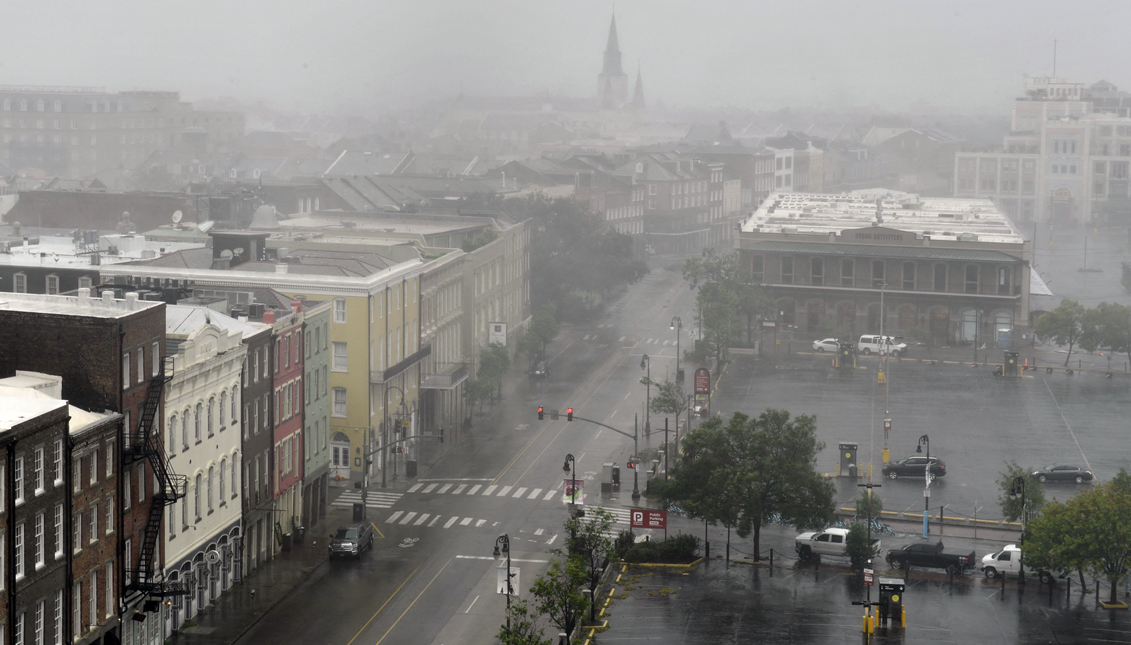
Ida fiercely strikes Louisiana shores
The Federal Emergency Management Agency has already deployed all its logistics to bring aid to New Orleans and support search and rescue efforts.
Just 16 years after Hurricane Katrina, which devastated New Orleans, a new Category 4 hurricane, called Ida this time, hit the Louisiana coast with winds of up to 150 miles per hour.
Before it downgraded to a tropical storm in the early hours of Monday, Aug. 30, Ida flooded vast coastal areas, caused countless emergencies and left more than a million people without power, including the entire state capital. All this was aggravated by the disconnection of the 911 emergency service line, which has since been restored
This is how Ida was seen from space, thanks to photographs shared by French astronaut Thomas Pesquet.
#HurricaneIda is weakening, which is good news, but it still did a lot of damage. Looking down the eye from above gives perspective of how high these clouds are… Thinking of all those affected. Stay safe! #MissionAlpha pic.twitter.com/Y8PGi4Rjqd
— Thomas Pesquet (@Thom_astro) August 30, 2021
So far, only two people have been reported killed by incidents related to the hurricane, and the federal government has activated all protocols in the aid, rescue and recovery effort in New Orleans and other areas of Louisiana. Those efforts have already begun. At the moment, the flood risks remain pertinent as heavy rains have continued their route through Mississippi and Alabama.
RELATED CONTENT
Through an interview on The Weather Channel, Tim Kernet, the mayor of Jean Lafitte, south of New Orleans, showed the devastation caused by Ida in his town, where the levees were overwhelmed, leaving hundreds of people trapped and, for now, out of reach of rescue operations due to the intensity of the storm.
As Louisiana residents begin the slow process of recovery, our coverage of #Ida continues. @JimCantore spoke to Lafitte Mayor Tim Kerner Jr. about ongoing rescues. pic.twitter.com/7WSUI7d4cD
— The Weather Channel (@weatherchannel) August 30, 2021
Louisiana Governor, John Bel Edwards, noted that the emergency, which threatens the lives of citizens and has forced many families to flee their homes, is also a "test" to evaluate the effectiveness of the state's flood prevention system that was implemented after Katrina.
Edwards shared a report from the Louisiana Department of Health, LDH, confirming the death of a man who drowned after his vehicle was hit by water while trying to cross a road near I-10 and West End Blvd, in New Orleans. He called on all people to avoid the roads because of the threats they present, not only because of flooding, but also the downed trees and debris found on the roads. Officials recommend checking this link to confirm the availability of alternate roads.
Despite its downgrade to a tropical storm, the governor also warned of the difficulty of the following weeks due to the intensity of the rains, telling people to remain off the roads as long as possible. Likewise, he also pointed to the ongoing threat of the COVID-19 pandemic, which at this time means that hospitals, if there are many injured, could collapse in rapid succession.
Louisianans in impacted areas should avoid roadways as downed power lines, trees, and debris still present threats. If you have to get on the road, check https://t.co/DfRrWUUH4j for travel information. #lagov #Ida pic.twitter.com/rMw9CnKzoC
— John Bel Edwards (@LouisianaGov) August 30, 2021
President Joe Biden, through his Twitter account, announced that aid from the Federal Emergency Management Agency, FEMA, includes 2,400 employees, millions of meals and liters of water, power generators, search and rescue teams, as well as 100 ambulances.
Thanks to the hard work of @FEMA, we’ve pre-positioned resources, equipment, and response teams to respond to Hurricane Ida. That includes more than 2,400 FEMA employees, millions of meals and liters of water, generators, search and rescue teams, and over 100 ambulances. pic.twitter.com/oPNBSj4hVS
— President Biden (@POTUS) August 30, 2021
The National Hurricane Center, NHC, stressed that Ida has created life-threatening situations, so it is extremely important to take all necessary measures to protect the lives of the inhabitants of these coastal areas. To follow the latest reports click this link.











LEAVE A COMMENT: